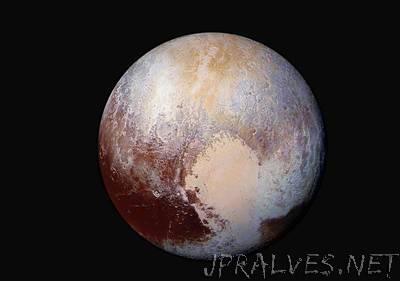
“In the solar system, calamitous events generally do not spell the end of worlds. A planet or moon can take a hit from an asteroid or comet. Wrenched off its previous trajectory, it might falter for a time, or tilt on its axis, or experience a dramatic reorganization of its exterior. But things will eventually stabilize. Titanic changes like these are happening at Pluto today, largely because of the iconic heart on its surface. The dwarf planet’s orientation in space is controlled by heavy ice in this heart, and by a massive global sea that astronomers now believe lies beneath it.”
